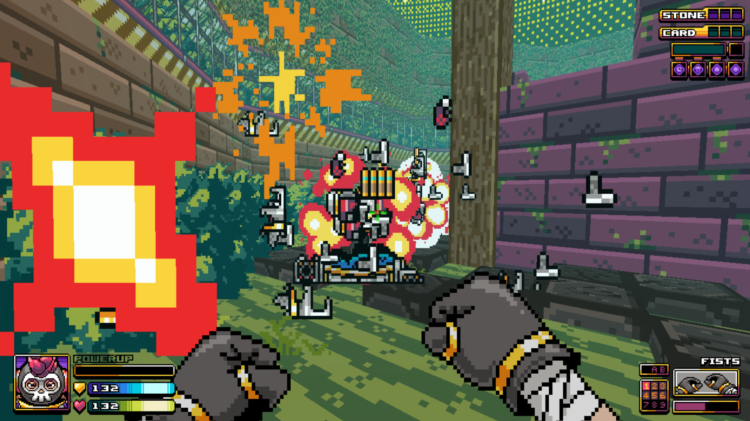Mala Petaka Brings 1990s Doom Energy Back with a Gorgeous and Brutal Modern Twist
Hellforge Studios’ Mala Petaka is a vivid reminder that the DNA of 1990s shooters still thrives today. Built entirely in GZDoom, a modernized fork of the original Doom engine, this 2025 release combines the tight combat and speed of classic shooters with bright visuals, inventive mechanics, and a surprising amount of personality.
At first glance, Mala Petaka feels like a lost Japanese arcade experiment from the early ’90s. The familiar Doom-era structure is all here: fast strafing, instant feedback, and swarms of enemies that fill rooms in seconds. But instead of the grim hellscapes and demonic themes of its predecessor, the game replaces fire and metal with color and charm. Every level bursts with primary tones, cartoonish design, and a chiptune soundtrack that keeps the pace relentless.
The protagonist, Petaka—a skull-faced fighter with a distinct style—blends humor with brutality. Combat feels immediate and punishing. Players can die within seconds, and success depends on mastering rhythm and reaction. The demo quickly proves that Mala Petaka is not interested in forgiving mistakes. Every missed dodge or wasted shot feels costly.
The gameplay borrows from both old and new schools of design. Alongside classic run-and-gun action, there’s a modern pseudo–glory kill system that lets players execute weakened enemies in bursts of melee strikes. These kills spray health and ammo pickups, turning precision into survival. It’s a loop that feels familiar to anyone who has played newer arena shooters but delivered through unmistakably retro foundations.
Movement plays an equally important role. Hellforge Studios adds mobility options like long jumps, freeze effects, and temporary god-mode pickups that reshape each encounter. A freeze gun lets players halt enemy fire, while a grenade launcher opens space for tactical control. It’s not a reinvention of Doom’s formula—it’s an evolution that builds depth within the old engine’s limitations.
“Mala Petaka asks: what if Doom was a gumdrop-sweet game they made in Japan in 1992?” — Joshua Wolens, PC Gamer
That question defines the game’s aesthetic identity. It celebrates nostalgia without relying on imitation. Every shot, explosion, and color shift feels deliberate, as though the developers wanted to prove how far an old engine can go in 2025. The GZDoom framework, first branched from the original Doom code two decades ago, remains shockingly capable in the right hands.
Despite the game’s charm, Mala Petaka isn’t easy. Enemies rush from all angles, ammunition drains quickly, and players must constantly switch weapons and tactics. It’s the kind of game that punishes carelessness but rewards mastery. Dying repeatedly feels like part of the rhythm rather than a flaw.

The project stands as proof that old technology can still inspire new creativity. While most modern shooters chase photorealism through Unreal Engine 5 and complex lighting systems, Mala Petaka thrives on simplicity and momentum. Its world may look cartoonish, but the precision behind its mechanics shows careful design and technical understanding.
With only a demo available now, Mala Petaka already feels like a cult favorite in the making. For players who grew up on Doom or Quake, it offers a nostalgic spark wrapped in modern polish. For newcomers, it’s an accessible glimpse into why the roots of the FPS genre still matter. Hellforge Studios hasn’t just revived an engine—they’ve reminded the industry that pure gameplay never goes out of style.

Comments